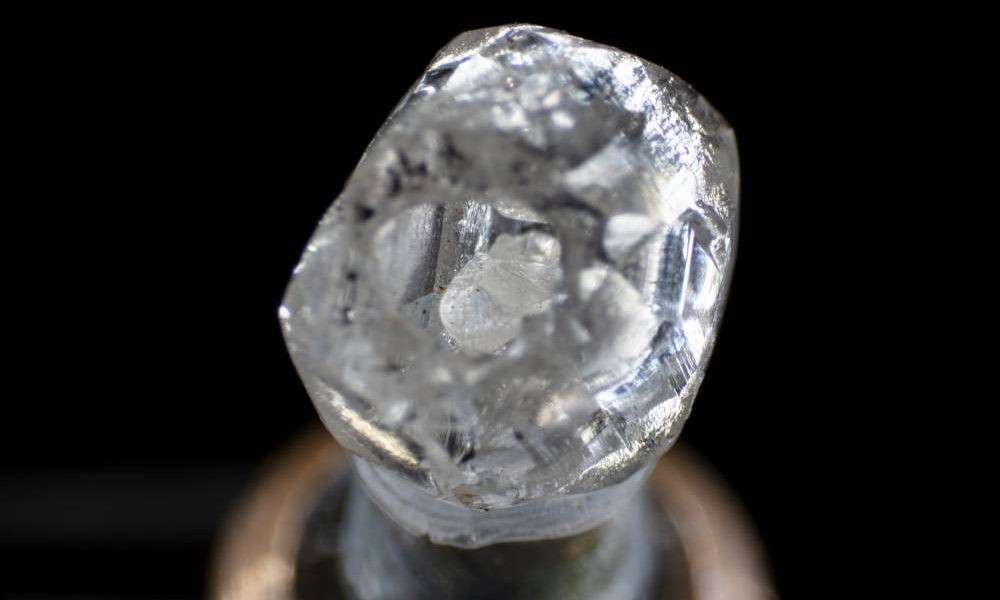De Beers Institute of Diamonds recently introduced a rare diamond, known as the ‘Beating Heart,’ which has an internal cavity enclosing a smaller diamond that can move around within the space. The 0.329-carat, D-colour, Type IaAB diamond was recovered by De Beers and was analysed at its facilities in Maidenhead, UK.
The diamond was found to have etch features visible on both the smaller diamond and the inner cavity of the host, and the cavity was formed due to preferential etching of an intermediate layer of poor-quality fibrous diamond.
The diamond will not be cut and polished but will instead be maintained for research and educational purposes with the consent of De Beers Group sightholder VD Global (VDG) in India and with the support of De Beers Institute of Diamonds.
The rough diamond was recovered by De Beers Group at one of its four global mining locations and was brought to the De Beers Institute of Diamonds facility in Maidenhead, UK, in November 2022. It was later named the ‘Beating Heart’ diamond by VDG in recognition of its unusual composition. The diamond has been registered on the Tracr blockchain platform, which provides an immutable record of a diamond’s provenance and production journey.
Samantha Sibley, Technical Educator at De Beers Group Ignite, explained: “I have certainly never seen anything like the ‘Beating Heart’ during my last 30 years in the diamond sector. Using the expertise of De Beers Group, we can shed light onto the formation and structure of this natural specimen and share these insights with a wider community of diamond professionals.”
The ‘Beating Heart’ now joins a small group of similar natural diamonds, including the widely publicised Matryoshka diamond from Siberia, Russia, which was first recorded in 2019.
Jamie Clark, Head of Global Operations at De Beers Institute of Diamonds, adds: “The ‘Beating Heart’ is a remarkable example of what can happen on the natural diamond journey from formation to discovery. A find like this demonstrates why natural diamond formation and origin is such a fascinating area of study and why it is important to strive for advancements in testing and analysis that can contribute to our knowledge of natural diamond growth.”

